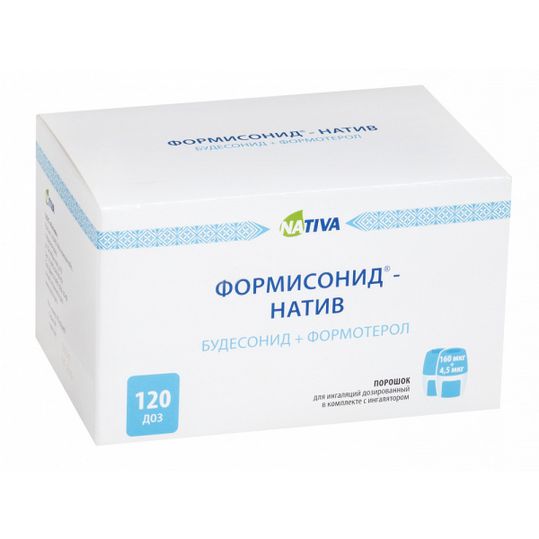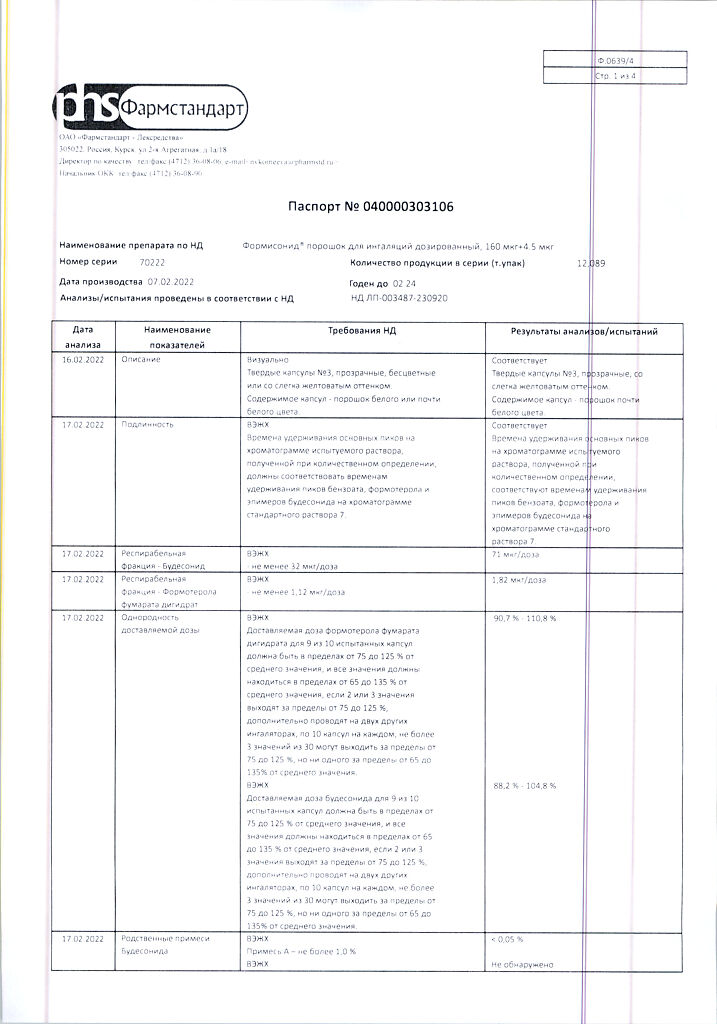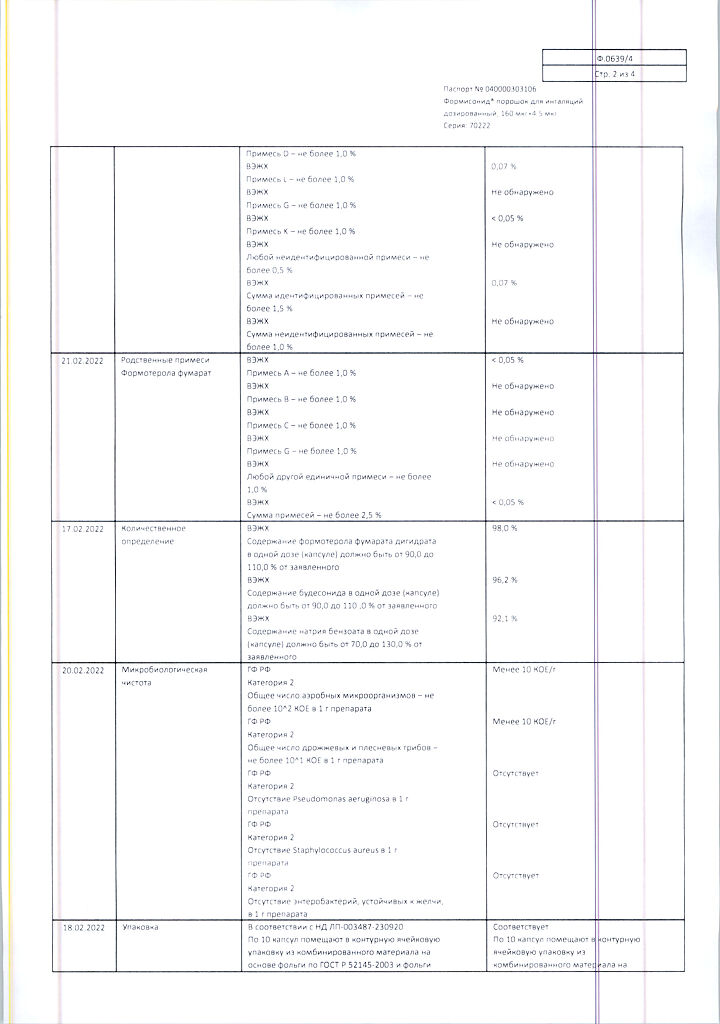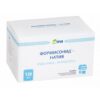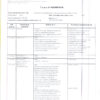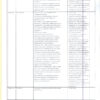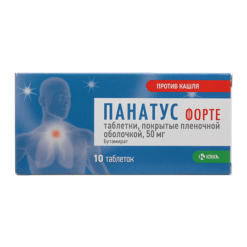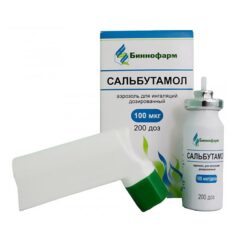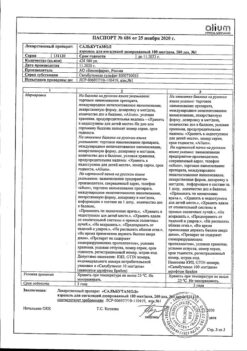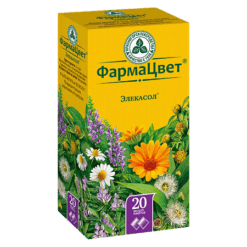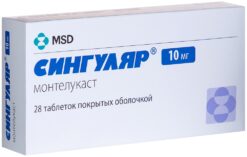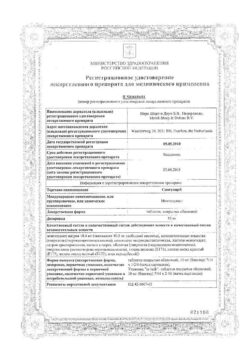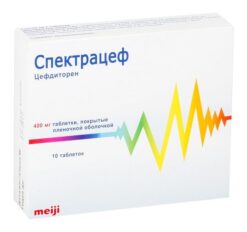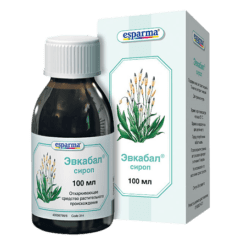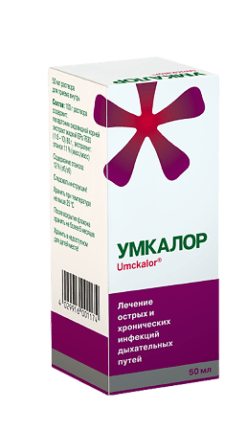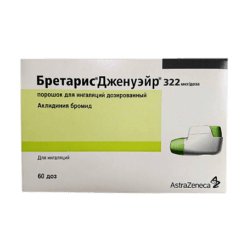No products in the cart.
Formisonide, 160 mcg+4, 5 mcg/dose 120 pcs
€56.19 €46.82
Description
Pharmacotherapeutic group:
Bronchodilator combined (β2-adrenomimetic selective+glucocorticosteroid topical)
ATX code: R03AK07
Pharmacological properties
Pharmacodynamics
Formisonide® contains budesonide and formoterol, which have different mechanisms of action and have an additive effect in reducing the frequency of bronchial asthma exacerbations. The special properties of budesonide and formoterol make it possible to use their combination to relieve attacks/symptoms with an anti-inflammatory effect, or as maintenance therapy for bronchial asthma.
Budesonide.Budesonide is a glucocorticosteroid that has a rapid (within hours) and dose-dependent anti-inflammatory effect on the airways after inhalation, reducing the severity of symptoms and frequency of exacerbations of bronchial asthma. When prescribing inhaled budesonide, there is a lower incidence of serious adverse effects than when using systemic glucocorticosteroids. It reduces the severity of bronchial mucosal edema, mucus production, sputum formation and airway hyperresponsiveness. The exact mechanism of anti-inflammatory action of glucocorticosteroids is unknown.
Formoterol. Formoterol is a selective β2 adrenoreceptor agonist whose inhalation is followed by rapid and prolonged relaxation of bronchial smooth muscle in patients with reversible airway obstruction. The dose-dependent bronchodilator effect occurs within 1-3 minutes after inhalation and persists for at least 12 hours after a single dose.
Clinical efficacy of the combination of budesonide + formoterol as maintenance therapy
. Adding formoterol to budesonide reduces the severity of bronchial asthma symptoms, improves lung function, and reduces the frequency of exacerbations.
The effect of budesonide + formoterol combination therapy on lung function is consistent with the effect of budesonide and formoterol alone and greater than budesonide alone. In all cases, short-acting beta2-adrenostimulator was used for seizure control. No decrease of antiasthmatic effect with time was noted. The combination drug has good tolerability.
The combination of budesonide and formoterol as maintenance therapy in combination with a short-acting β2-adrenoceptor. No decrease in anti-asthmatic effect with time has been observed. The drug has good tolerability.
The combination drug budesonide+formoterol as maintenance therapy in combination with a short-acting beta2-adrenoceptor to stop attacks was administered to patients aged 6 to 11 years for 12 weeks (two inhalations of 80/4.5 mcg/inhalation twice daily). Improved pulmonary function and good tolerability of therapy compared to a corresponding dose of budesonide were noted.
Clinical efficacy of budesonide and formoterol combination as maintenance therapy and for seizure/symptom control
The clinical effectiveness of budesonide and formoterol combination as maintenance therapy and for seizure/symptom control. A statistically and clinically significant reduction in the number of severe exacerbations was observed in 4,447 patients treated with budesonide and formoterol combination therapy as maintenance therapy and for attack/symptom management with anti-inflammatory effects for 6 to 12 months, an increase in the time to first exacerbation compared with the combination of budesonide combined with formoterol or budesonide as maintenance therapy and a beta2-adrenergic stimulant for seizure control. There was also effective control of disease symptoms, pulmonary function, and a reduction in the frequency of prescribing inhalation for seizure control. No development of tolerance to prescribed therapy was detected.
In patients who sought medical attention for the development of an acute asthma attack, symptom control (relief of bronchospasm) was as rapid and effective after inhalation of the combination of budesonide and formoterol as after prescription of salbutamol and formoterol.
Chronic Obstructive Pulmonary Disease (COPD)
In two studies lasting 12 months in patients with moderate to severe COPD (baseline: prebronchodilatation first-second forced expiratory volume (PEF1) < 50% of proper; median postbronchodilatation PEF1 = 42% of proper) there was a significant reduction in the rate of exacerbations with the budesonide and formoterol combination compared with patients treated with formoterol or placebo alone (mean exacerbation rate of 1.4 compared with 1.8-1.9 in the placebo/formoterol group). No difference was noted between taking budesonide in combination with formoterol and formoterol on the ROB 1.
Pharmacokinetics
.Bsass
The budesonide+formoterol combination drug is bioequivalent to the corresponding monotherapy drugs with respect to the systemic effects of budesonide and formoterol. In spite of this, a slight increase in cortisol suppression after budesonide and formoterol combination was observed compared with monotherapies. This difference has no effect on clinical safety. There is no evidence for pharmacokinetic interaction between budesonide and formoterol.
The pharmacokinetic parameters for the respective substances are comparable after administration of budesonide and formoterol as monotherapy and as part of budesonide+formoterol combination therapy. For budesonide when administered as part of the combination drug, the area under the curve “concentration-time” (AUC) is slightly greater, the drug is absorbed faster and the value of maximum plasma concentration is higher.
For formoterol when administered as part of a combination drug, the maximum plasma concentration is the same as that of the monotherapy.
Inhaled budesonide is rapidly absorbed and reaches maximum plasma concentration 30 minutes after inhalation. The average dose of budesonide delivered to the lungs by inhalation is 32-44% of the delivered dose. Systemic bioavailability is approximately 49% of the delivered dose. In children aged 6 to 16 years, the average dose of budesonide delivered to the lungs by inhalation does not differ from those in adult patients (the final concentration of the drug in plasma was not determined).
Inhaled formoterol is rapidly absorbed and reaches maximum plasma concentration 10 minutes after inhalation. The average dose of formoterol delivered to the lungs by inhalation is 28-49% of the delivered dose. Systemic bioavailability is about 61% of the delivered dose.
Distribution
About 50% of formoterol and 90% of budesonide bind to plasma proteins. The volume of distribution for formoterol is about 4 l/kg and for budesonide 3 l/kg.
Metabolism, excretion
Formoterol is inactivated by conjugation (active O-demethylated metabolites are formed mainly as inactivated conjugates). Budesonide undergoes intensive biotransformation (about 90%) during the first passage through the liver to form metabolites with low glucocorticosteroid activity. Glucocorticosteroid activity of the main metabolites – 6-β-hydroxybudesonide and 16-α-hydroxyprednisolone – does not exceed 1% of similar activity of budesonide. There is no evidence of metabolite interaction or substitution reaction between budesonide and formoterol.
The bulk of the formoterol dose is metabolized in the liver and then excreted by the kidneys: after inhalation, 8-13% of the delivered dose of formoterol is excreted unchanged. Formoterol has a high systemic clearance (approximately 1.4 L/min); the half-life of the drug is on average 17 hours.
Budesonide is metabolized predominantly by the CYP3A4 isoenzyme. Budesonide metabolites are excreted by the kidneys unchanged or as conjugates. Only small amounts of unchanged budesonide are detected in the urine. Budesonide has a high systemic clearance (approximately 1.2 L/min).
Pharmacokinetics in special patient groups
The pharmacokinetics of formoterol and budesonide in patients with renal impairment have not been studied.
Plasma concentrations of budesonide and formoterol may be increased in patients with liver disease.
Indications
Indications
– Bronchial asthma, to achieve overall disease control, including prevention and relief of symptoms, and reducing the risk of exacerbations.
Formisonide® is suitable for the treatment of bronchial asthma of any severity, if it is advisable to use inhaled glucocorticosteroids.
– Chronic obstructive pulmonary disease (COPD), as symptomatic therapy in patients with COPD with post-bronchodilator FEV1 < 70% predicted and with a history of exacerbations, despite regular bronchodilator therapy.
Pharmacological effect
Pharmacological effect
Pharmacotherapeutic group:
combined bronchodilator (selective β2-adrenergic agonist + local glucocorticosteroid)
ATX code: R03AK07
Pharmacological properties
Pharmacodynamics
Formisonide® contains budesonide and formoterol, which have different mechanisms of action and exhibit an additive effect in reducing the frequency of exacerbations of bronchial asthma. The special properties of budesonide and formoterol make it possible to use their combination to relieve attacks/symptoms with an anti-inflammatory effect, or as maintenance therapy for bronchial asthma.
Budesonide. Budesonide is a glucocorticosteroid, which, after inhalation, has a rapid (within several hours) and dose-dependent anti-inflammatory effect on the respiratory tract, reducing the severity of symptoms and the frequency of exacerbations of bronchial asthma. When prescribing inhaled budesonide, there is a lower incidence of serious adverse effects than when using systemic glucocorticosteroids. Reduces the severity of edema of the bronchial mucosa, mucus production, sputum formation and airway hyperreactivity. The exact mechanism of the anti-inflammatory effect of glucocorticosteroids is unknown.
Formoterol. Formoterol is a selective β2-adrenergic receptor agonist, after inhalation of which rapid and long-lasting relaxation of bronchial smooth muscles occurs in patients with reversible airway obstruction. The dose-dependent bronchodilator effect occurs within 1-3 minutes after inhalation and persists for at least 12 hours after taking a single dose.
Clinical efficacy of budesonide + formoterol combination as maintenance therapy
The addition of formoterol to budesonide reduces the severity of asthma symptoms, improves lung function and reduces the frequency of exacerbations of the disease.
The effect of the combined drug budesonide + formoterol on lung function corresponds to the effect of the combination of budesonide and formoterol monopreparations and exceeds the effect of budesonide alone. In all cases, a short-acting beta2-agonist agonist was used to relieve attacks. There was no decrease in the anti-asthmatic effect over time. The combined drug is well tolerated.
The combination of budesonide and formoterol as maintenance therapy in combination with a short-acting β2-agonist. There was no decrease in the anti-asthmatic effect over time. The drug is well tolerated.
The combination drug budesonide + formoterol as maintenance therapy in combination with a short-acting beta2-agonist agonist to relieve attacks was prescribed to patients aged 6 to 11 years for 12 weeks (two inhalations of 80/4.5 mcg/inhalation twice a day). Improvement in pulmonary function and good tolerability of therapy were noted in comparison with the corresponding dose of budesonide.
Clinical efficacy of the combination of budesonide and formoterol as maintenance therapy and for the relief of attacks/symptoms
In a 6- to 12-month follow-up study of 4,447 patients treated with a combination of budesonide and formoterol for maintenance and seizure/symptom relief with anti-inflammatory effects, there was a statistically and clinically significant reduction in the number of severe exacerbations, an increase in the time to first exacerbation compared with the combination of budesonide plus formoterol or budesonide as maintenance and beta2-adrenergic agonist to relieve attacks. Effective control of disease symptoms, pulmonary function, and a decrease in the frequency of inhalation prescriptions to relieve attacks were also noted. There was no development of tolerance to the prescribed therapy.
In patients who sought medical help due to the development of an acute attack of bronchial asthma, after inhalation of a combination of budesonide and formoterol, relief of symptoms (relief of bronchospasm) occurred as quickly and effectively as after the administration of salbutamol and formoterol.
Chronic obstructive pulmonary disease (COPD)
In two 12-month studies in patients with moderate to severe COPD (baseline: prebronchodilator forced expiratory volume in the first second (FEV1) < 50% predicted; median postbronchodilator FEV1 = 42% predicted), a combination of budesonide and formoterol showed a significant reduction in the incidence of exacerbations of the disease compared with patients receiving only as therapy. formoterol or placebo (mean exacerbation rate 1.4 compared with 1.8-1.9 in the placebo/formoterol group). There were no differences observed between budesonide in combination with formoterol and formoterol on FEV 1.
Pharmacokinetics
Suction
The combined drug budesonide + formoterol is bioequivalent to the corresponding monopreparations with regard to the systemic action of budesonide and formoterol. Despite this, a slight increase in cortisol suppression was noted after taking the combination of budesonide and formoterol compared with single agents. This difference does not have an impact on clinical safety. There is no evidence of a pharmacokinetic interaction between budesonide and formoterol.
Pharmacokinetic parameters for the corresponding substances are comparable after the administration of budesonide and formoterol in the form of single drugs and as part of the combination drug budesonide + formoterol. For budesonide, when administered as part of a combination drug, the area under the concentration-time curve (AUC) is slightly larger, the drug is absorbed faster and the maximum plasma concentration is higher.
For formoterol, when administered as part of a combination drug, the maximum concentration in blood plasma coincides with that for the single drug.
Inhaled budesonide is rapidly absorbed and reaches maximum plasma concentration 30 minutes after inhalation. The average dose of budesonide reaching the lungs during inhalation is 32-44% of the delivered dose. Systemic bioavailability is approximately 49% of the delivered dose. In children aged 6 to 16 years, the average dose of budesonide entering the lungs during inhalation does not differ from that in adult patients (the final concentration of the drug in the blood plasma was not determined).
Inhaled formoterol is rapidly absorbed and reaches maximum concentration in blood plasma 10 minutes after inhalation. The average dose of formoterol reaching the lungs during inhalation is 28-49% of the delivered dose. Systemic bioavailability is approximately 61% of the delivered dose.
Distribution
Approximately 50% of formoterol and 90% of budesonide are bound to plasma proteins. The volume of distribution for formoterol is about 4 l/kg and for budesonide 3 l/kg.
Metabolism, excretion
Formoterol is inactivated by conjugation (active O-demethylated metabolites are formed mainly in the form of inactivated conjugates). Budesonide undergoes intense biotransformation (about 90%) during the first passage through the liver with the formation of metabolites with low glucocorticosteroid activity. The glucocorticosteroid activity of the main metabolites – 6-β-hydroxybudesonide and 16-α-hydroxyprednisolone – does not exceed 1% of the similar activity of budesonide. There is no evidence of metabolite interactions or substitution reactions between budesonide and formoterol.
The bulk of the dose of formoterol is metabolized in the liver and then excreted by the kidneys: after inhalation, 8-13% of the delivered dose of formoterol is excreted unchanged. Formoterol has a high systemic clearance (approximately 1.4 L/min); The half-life of the drug averages 17 hours.
Budesonide is metabolized primarily with the participation of the CYP3A4 isoenzyme. Budesonide metabolites are excreted by the kidneys unchanged or in the form of conjugates. Only a small amount of unchanged budesonide is found in the urine. Budesonide has a high systemic clearance (approximately 1.2 L/min).
Pharmacokinetics in special groups of patients
The pharmacokinetics of formoterol and budesonide in patients with renal failure have not been studied.
Plasma concentrations of budesonide and formoterol may be increased in patients with liver disease.
Special instructions
Special instructions
Dosage Directions
If the symptoms of bronchial asthma can be controlled, the dose of Formisonide® can be gradually reduced, and it is important to constantly monitor the patient’s condition.
The lowest effective dose of Formisonide® should be prescribed (see section “Dosage and Administration”).
Patients are advised to always carry emergency medications or Formisonide® (for patients with bronchial asthma using Formisonide® for the relief of attacks/symptoms with anti-inflammatory action – therapy A or B), or short-acting beta2-agonists (for all patients using Formisonide® only for maintenance therapy – therapy C).
When using Formisonide® as maintenance therapy, the patient should be reminded of the need to regularly take a maintenance dose of the drug in accordance with the selected therapy, even in cases where there are no symptoms of the disease.
It is recommended to instruct the patient to rinse the mouth with water after inhaling maintenance doses in order to prevent the risk of developing candidiasis of the oral and pharyngeal mucosa. It is also necessary to rinse your mouth with water after inhalation on demand in case of development of candidiasis of the oral mucosa and pharynx.
It is recommended to gradually reduce the maintenance dose of the drug before stopping treatment and it is not recommended to abruptly discontinue treatment. Inhaled glucocorticosteroids should not be completely discontinued, except in cases where temporary withdrawal is necessary to confirm the diagnosis of bronchial asthma.
Formisonide 80 mcg + 4.5 mcg/dose is not intended for the treatment of patients with mild to severe asthma.
Increased symptoms of the disease
During therapy with Formisonide®, exacerbations and the development of serious adverse events associated with bronchial asthma may occur. Patients should continue treatment but seek medical attention if asthma symptoms are not controlled or if symptoms worsen after starting therapy.
If therapy is insufficiently effective or the maximum recommended doses of Formisonide® are exceeded, it is necessary to reconsider treatment tactics. Sudden and progressive deterioration in control of symptoms of asthma or COPD is a potentially life-threatening condition and requires urgent medical attention. In this situation, you should consider increasing the dose of glucocorticosteroids, for example, prescribing a course of oral glucocorticosteroids, or treatment with antibiotics in case of infection. In case of severe exacerbation, monotherapy with a combination of an inhaled glucocorticosteroid and a long-acting beta2-adrenergic agonist is not enough.
Transfer from oral therapy
If there is reason to believe that adrenal function has been impaired due to previous systemic glucocorticosteroid therapy, precautions should be taken when transferring patients to treatment with Formisonide®.
The benefits of inhaled budesonide therapy generally minimize the need for oral corticosteroids, but patients who discontinue oral corticosteroid therapy may experience long-term adrenal insufficiency. Patients who have previously required acute high-dose corticosteroids or have received long-term treatment with high-dose inhaled corticosteroids may also be at risk. It is necessary to provide additional administration of glucocorticosteroids during periods of stress or surgery.
Excipients
Formisonide® contains lactose (<1 mg/inhalation). Typically this amount does not cause problems in patients with lactose intolerance.
Precautionary measures for certain diseases
Precautions should be taken when treating patients with prolonged QTc interval. Taking formoterol may cause a prolongation of the QTc interval.
When beta2-agonists are used together with drugs that can cause or enhance the hypokalemic effect, for example, xanthine derivatives, steroids or diuretics, the hypokalemic effect of beta2-agonists may be enhanced. Special precautions should be taken in patients with unstable bronchial asthma who use short-acting bronchodilators to relieve attacks during exacerbation of severe bronchial asthma, since the risk of developing hypokalemia increases against the background of hypoxia and in other conditions when the likelihood of developing a hypokalemic effect increases. In such cases, it is recommended to monitor serum potassium levels.
During treatment, blood glucose concentrations should be monitored in patients with diabetes mellitus.
The need for the use and dose of inhaled glucocorticosteroids should be reconsidered in patients with active or inactive forms of pulmonary tuberculosis, fungal, viral or bacterial infections of the respiratory system.
Systemic action
Systemic effects may occur when taking any inhaled glucocorticosteroids, especially when taking high doses of drugs over a long period of time. Systemic effects are less likely to occur with inhaled therapy than with oral corticosteroids. Possible systemic effects include adrenal suppression, growth retardation in children and adolescents, decreased bone mineral density, cataracts, and glaucoma.
Due to the potential effect of inhaled glucocorticosteroids on bone mineral density, special attention should be paid to patients taking high doses of the drug for a long period with risk factors for osteoporosis. Studies of long-term use of inhaled budesonide in children at an average daily dose of 400 mcg (metered dose) or adults at a daily dose of 800 mcg (metered dose) did not show a significant effect on bone mineral density. There is no data regarding the effect of high doses of Formisonide® on bone mineral density.
Paradoxical bronchospasm
As with any other inhalation therapy, paradoxical bronchospasm may occur with an immediate increase in wheezing after taking a dose of the drug. In this regard, therapy with Formisonide® should be discontinued, treatment tactics should be reconsidered and, if necessary, alternative therapy should be prescribed.
Pediatric patient population
It is recommended to regularly monitor the growth of children receiving long-term inhaled glucocorticosteroid therapy. In case of established growth retardation, therapy should be reconsidered in order to reduce the dose of inhaled glucocorticosteroid. It is necessary to carefully evaluate the ratio of the benefits of glucocorticosteroid therapy to the possible risk of growth retardation. When choosing therapy, it is recommended to consult a pediatric pulmonologist.
Based on limited data from studies of long-term corticosteroid use, it can be assumed that most children and adolescents treated with inhaled budesonide will eventually achieve normal adult height. However, minor short-term growth retardation has been reported, mainly in the first year of treatment.
Population of patients with COPD
Data from clinical studies of the drug Formisonide® in patients with COPD with pre-bronchodilator FEV 1 > 50% of predicted and with post-bronchodilator FEV 1 < 70% of predicted are not available (see section “Pharmacodynamics”).
Clinical studies and meta-analyses have shown that the use of inhaled corticosteroids for COPD may lead to an increased risk of pneumonia. However, the absolute risk with budesonide is small. A meta-analysis of 11 double-blind studies involving 10,570 patients with COPD did not demonstrate a statistically significant increase in the risk of pneumonia in patients receiving budesonide (including in combination with formoterol) compared with patients receiving therapy without budesonide (placebo or formoterol). The incidence of the serious adverse event of pneumonia was 1.9% per year with budesonide-containing therapy and 1.5% per year with budesonide-free therapy. The pooled hazard ratio comparing therapy containing budesonide to therapy without budesonide was 1.15 (95% confidence interval (CI): 0.83, 1.57). The pooled hazard ratio comparing budesonide/formoterol with formoterol or placebo was 1.00 (95% CI: 0.69, 1.44). The cause-and-effect relationship between the development of pneumonia and the use of drugs containing budesonide has not been established.
Impact on the ability to drive vehicles and machinery
Formisonide® does not affect the ability to drive vehicles and machines. May affect the ability to drive vehicles and machinery if side effects develop.
Active ingredient
Active ingredient
Budesonide, Formoterol
Composition
Composition
Active ingredients:
Budesonide 160 mcg
Formoterol fumarate dihydrate 4.5 mcg
Excipients:
Sodium benzoate 0.02 mg
Lactose monohydrate up to 12.0 mg
Hard capsule*
Caramel dye –
Dye “copper chlorophyllin complex” –
Hypromellose up to 100%
Pregnancy
Pregnancy
There are no clinical data on the use of Formisonide® or the combined use of budesonide and formoterol during pregnancy.
Pregnancy. During pregnancy, Formisonide® should be used only in cases where the benefit of the drug outweighs the potential risk to the fetus. The lowest effective dose of budesonide needed to maintain adequate control of asthma symptoms should be used.
Breastfeeding period. Inhaled budesonide is excreted in breast milk, however, when used in therapeutic doses, no effects on the child were noted. It is not known whether formoterol passes into women’s breast milk. Formisonide® can be prescribed to women during breastfeeding only if the expected benefit to the mother is greater than any possible risk to the baby.
Contraindications
Contraindications
-Hypersensitivity to budesonide, formoterol or inhaled lactose.
-Lactose intolerance, lactase deficiency or glucose-galactase malabsorption.
-Children up to 6 years of age (for a dosage of 80 mcg+4.5 mcg).
-Children up to 12 years of age (for a dosage of 160 mcg + 4.5 mcg and 320 mcg + 9 mcg).
With caution
Pulmonary tuberculosis (active or inactive form); fungal, viral or bacterial infections of the respiratory system, thyrotoxicosis, pheochromocytoma, diabetes mellitus, decreased function of the adrenal cortex, uncontrolled hypokalemia, hypertrophic obstructive cardiomyopathy, idiopathic hypertrophic subaortic stenosis, severe arterial hypertension, aneurysm of any location or other severe cardiovascular diseases (coronary heart disease, tachyarrhythmia or severe heart failure), prolongation of the QT interval (taking formoterol may cause prolongation of the QTc interval).
Side Effects
Side Effects
There was no increase in the incidence of adverse reactions observed during the concomitant administration of the two drugs.
The most common adverse reactions associated with taking the drug are such pharmacologically expected adverse events for beta2-agonists, such as tremor and rapid heartbeat; symptoms are usually mild and disappear within a few days of starting treatment. During the use of budesonide for COPD, bruising and pneumonia occurred at an incidence of 10% and 6%, respectively, compared with 4% and 3% in the placebo group (p < 0.001 and p < 0.01, respectively).
Interaction
Interaction
Taking ketoconazole 200 mg once daily increases plasma concentrations (single oral dose of 3 mg) when administered together by an average of 6 times. When using ketoconazole 12 hours after taking budesonide, the plasma concentration of the latter increased, on average, 3 times. There is no information about such an interaction with inhaled budesonide, however, a noticeable increase in the concentration of the drug in the blood plasma should be expected. Since there are no data for dosage recommendations, the combination of drugs described above should be avoided. If this is not possible, the time interval between the use of ketoconazole and budesonide should be increased as much as possible. A dose reduction of budesonide should also be considered. Other potent CYP3A4 inhibitors are also likely to significantly increase budesonide plasma concentrations. Formisonide® for the relief of attacks/symptoms with anti-inflammatory effect is not recommended for patients receiving potent CYP3A4 inhibitors.
β-adrenergic receptor blockers may reduce the effect of formoterol. Formisonide® should not be prescribed concomitantly with β-blockers (including eye drops), except in cases of emergency.
The combined use of Formisonide® and quinidine, disopyramide, procainamide, phenothiazines, antihistamines (terfenadine), monoamine oxidase inhibitors (MAO) and tricyclic antidepressants may prolong the QTc interval and increase the risk of ventricular arrhythmias.
In addition, levodopa, levothyroxine, oxytocin and alcohol can reduce the tolerance of the heart muscle to beta2-agonists.
The combined use of MAO inhibitors, as well as drugs with similar properties, such as furazolidone and procarbazine, may cause an increase in blood pressure. There is an increased risk of developing arrhythmias in patients undergoing general anesthesia with halogenated hydrocarbon preparations.
When taking Formisonide® together with other β-adrenergic agonists, the side effects of formoterol may be increased.
As a result of the use of beta2-agonists, hypokalemia may occur, which may be exacerbated by concomitant treatment with xanthine derivatives, mineral derivatives of glucocorticosteroids or diuretics. Hypokalemia may increase the susceptibility to the development of arrhythmias in patients taking cardiac glycosides.
There was no interaction between budesonide and formoterol with other drugs used to treat bronchial asthma.
Overdose
Overdose
Symptoms of formoterol overdose: tremor, headache, rapid heartbeat. In isolated cases, the development of tachycardia, hyperglycemia, hypokalemia, prolongation of the QTc interval, arrhythmia, nausea and vomiting was reported. Supportive symptomatic treatment may be prescribed. The use of formoterol at a dose of 90 mcg for 3 hours in patients with acute bronchial obstruction was safe.
If it is necessary to discontinue the drug Formisonide® due to an overdose of formoterol, which is part of the combination drug, the issue of prescribing an appropriate glucocorticosteroid should be considered.
Overdose of budesonide: In case of acute overdose of budesonide, even in significant doses, clinically significant effects are not expected. With chronic use of excessive doses, systemic effects of glucocorticosteroids, such as hypercortisolism and suppression of adrenal function, may occur.
Treatment: supportive and symptomatic.
Storage conditions
Storage conditions
In a place protected from light at a temperature not exceeding 25 °C.
Keep out of reach of children
Shelf life
Shelf life
2 years.
Do not use after expiration date.
Manufacturer
Manufacturer
Pharmstandard-Leksredstva, Russia
Additional information
| Shelf life | 2 years. Do not use after the expiration date. |
|---|---|
| Conditions of storage | Store in a light-protected place at a temperature not exceeding 25 °C. Keep out of reach of children |
| Manufacturer | Pharmstandard-Leksredstva, Russia |
| Medication form | metered inhalation powder |
| Brand | Pharmstandard-Leksredstva |
Related products
Buy Formisonide, 160 mcg+4, 5 mcg/dose 120 pcs with delivery to USA, UK, Europe and over 120 other countries.

